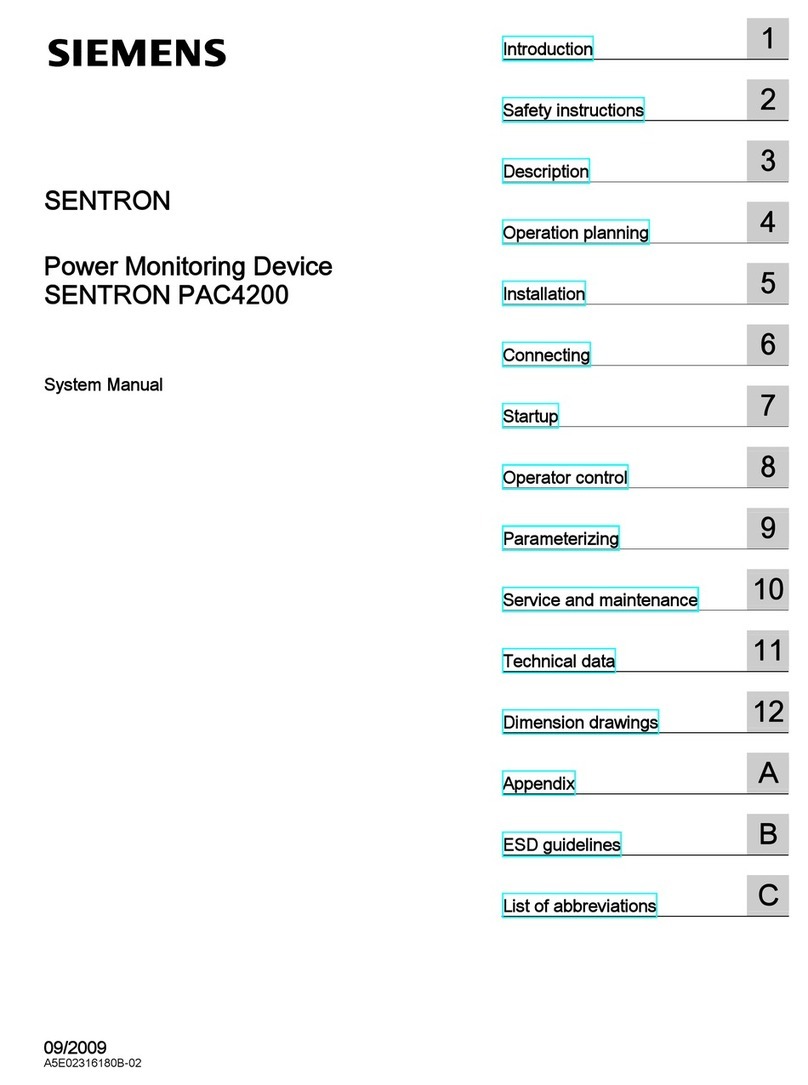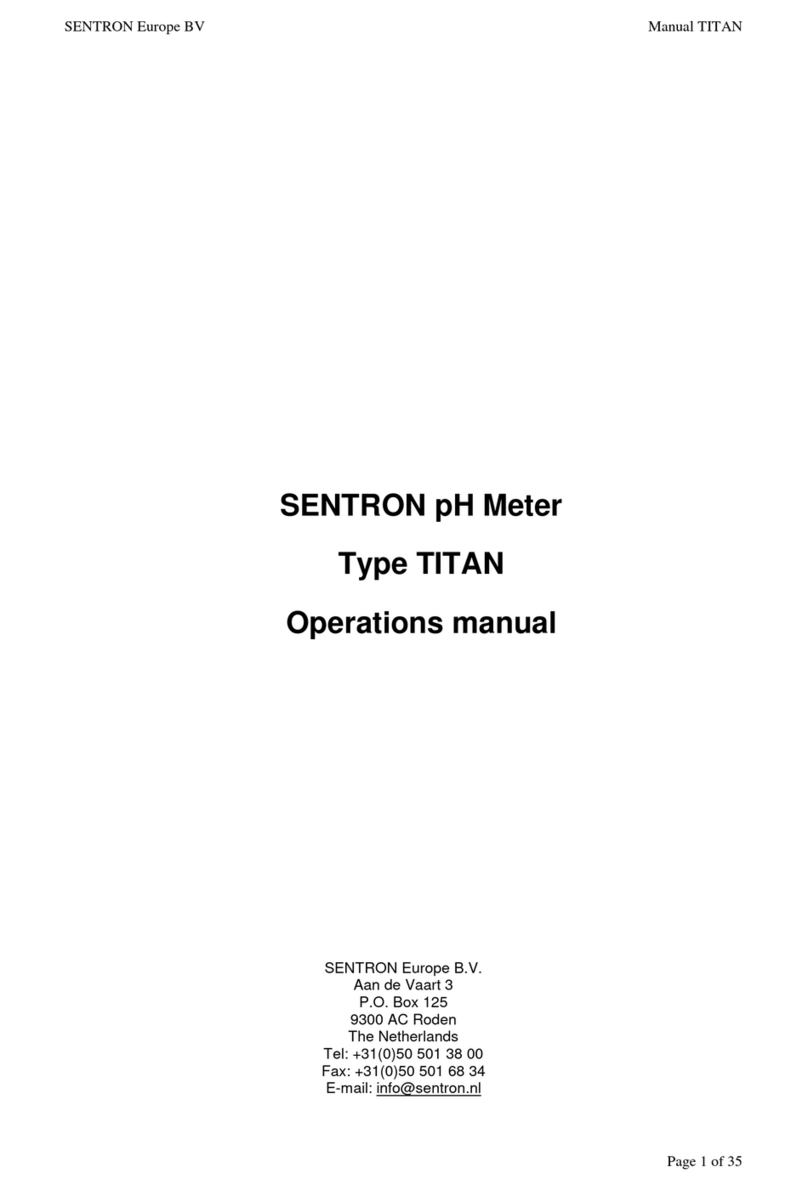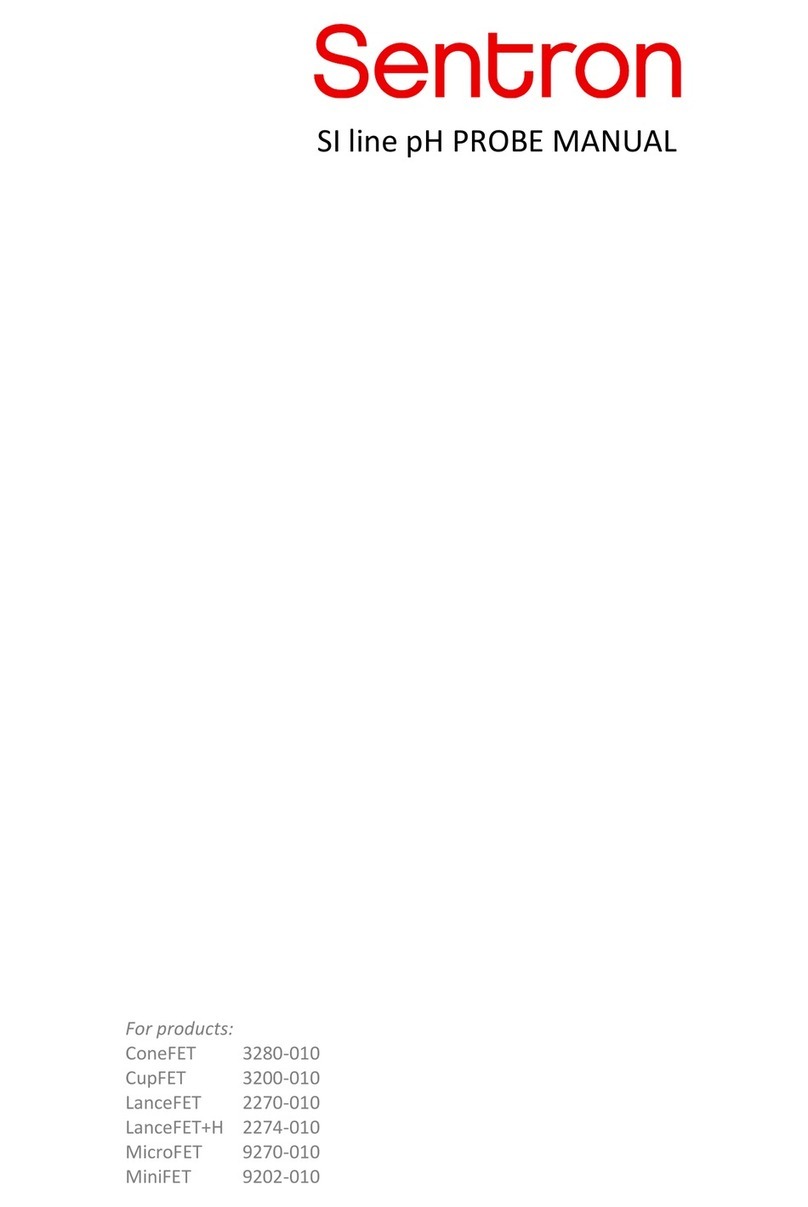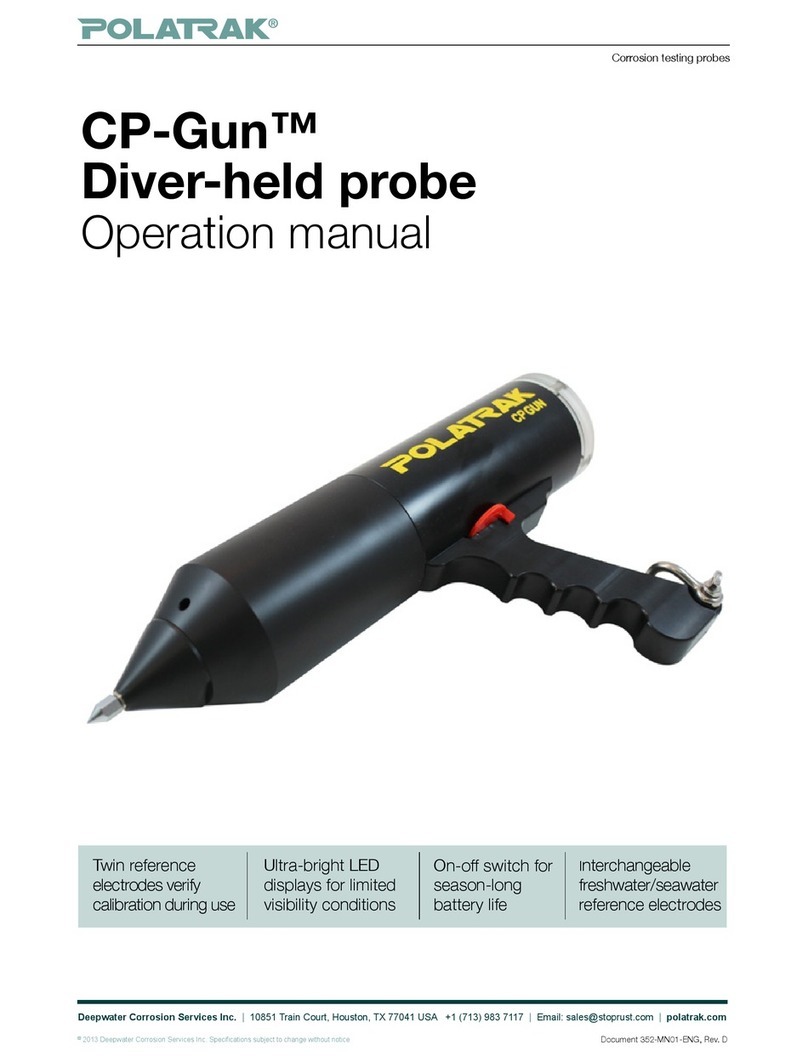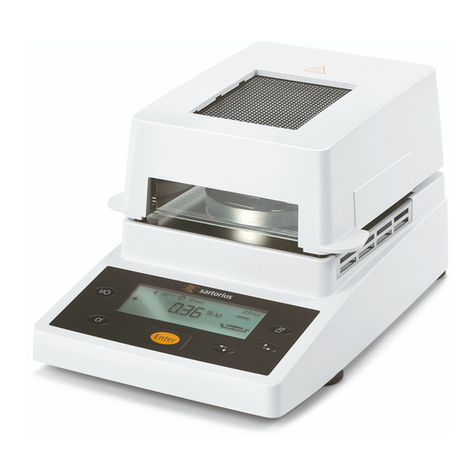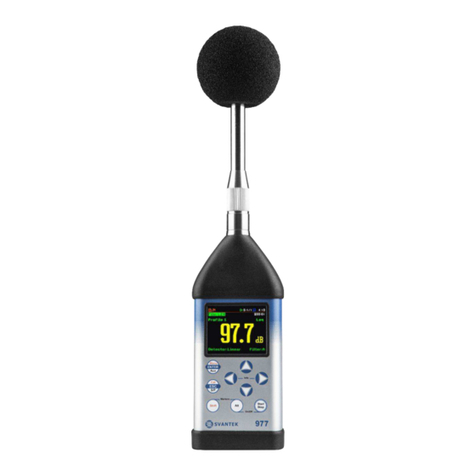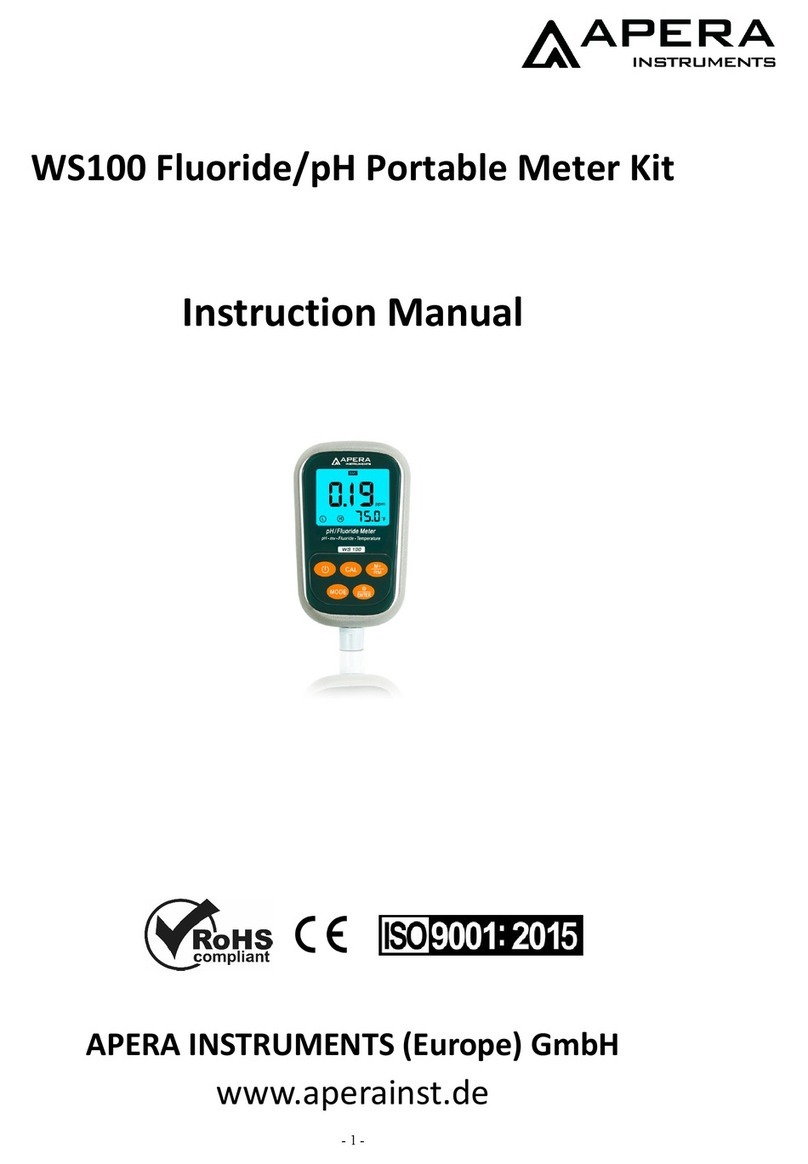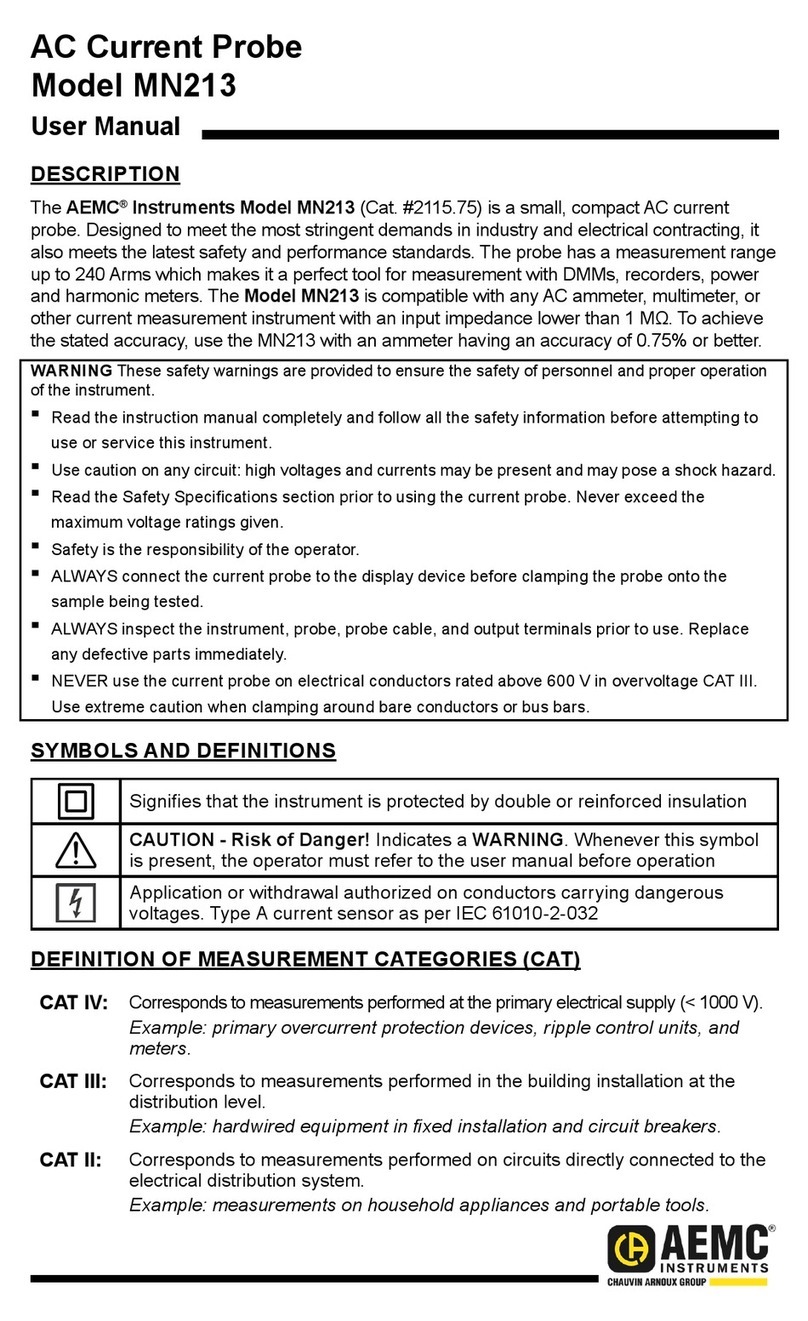SENTRON ISFET Installation instructions

www.sentron.nl
Full manual
Sentron
pH probe
Usage, cleaning and storage
instructions for Sentron
ISFET pH probes

Contents
1
GENERAL 3
Warning 4
Notes before use 4
Operating tips 5
PREPARE 7
Unpack the box 8
Gather the following components 9
Plug and screw the probe parts together 10
Remove residues 11
Download the app 11
Charge the probe 12
GET STARTED 13
Activate your device 14
No registered devices yet? 14
Registered devices? 14
Connected devices 15
Start your measurements 16
Live parameter values 16
Battery status of devices 16
Calibration 16
Calibration status of devices 16
pH calibration 17
Temperature calibration 18
Add or delete devices 18
Standby mode of devices 18
Reset your device 19
Restart your device 19
Device settings 20
Calibration information 20
Probe settings 20
Transmitter settings 20
Firmware update 20
Disconnect / Delete 20
Probespecicinformation 21
CupFET 21
MicroFET 21
ConeFET 21
LanceFET 21

USE 22
Rinse probe 23
Select probe 24
Sample 24
Save sample set 25
Export sample 25
Interval 26
Start interval 27
During interval 27
Stop interval 27
Export interval 27
History 28
Settings 29
FAQ 29
Settings 29
Advanced mode 29
Links 29
Database reset 29
Color codes of probe 30
CLEAN 31
Clean 32
REVITALIZE 33
Prepare saturated KCl 34
Clean and revitalize 35
Revive 35
STORE 36
Store for short time periods 37
Store for longer time periods 38
BUFFERS 39
Sentroncalibrationbuers 40
Twin neck bottle 40
AdvantagesofSentronpHbuertwinneckbottles 40
Note 40
SPECIFICATION 41
CONTACT 44
Delivery and return 45
Support 45
Guarantee 45
Declaration of Compliance 45
More info 45
Contact 46
Address 46
2

GENERAL
3

Warning
Do not open the probe as this may cause damage and will void the guarantee.
All information provided in this manual is applicable at the moment of publication.
Sentron holds the right to change components, functions and procedures as required.
The Sentron wireless probes allow you to perform accurate pH measurements. We advise
you to read the ‘Quick Start’ guide before use and keep this guide for future reference. We
also advise you to read this manual to learn about the probe’s maintenance and cleaning
instructions.
The Sentron pH probes are designed for pH measurements. Do not use the probes for
other applications as this may cause damage.
Notes before use
The pH-sensitive element in a Sentron pH probe is the ISFET semi-conductor sensor. This
sensing element needs to be driven by an electronic circuit that is built into the Sentron
probe transmitter. Sentron probes are robust and build to last. The pH probe nonetheless
requires periodic maintenance. This is described in this manual under ‘Clean’, ‘Revitalize’
and ‘Store’.
Do not use the probe outside the specied temperature range as this might result in
probe failure or irreversible damage to the probe.
Samples must be aqueous solutions or semi-solids and compatible with the probe’s
materials.
If information is required regarding the chemical resistance of the probe, please contact
your local dealer or Sentron.
4

5
•Clean your probe regularly during use. For cleaning instructions see this manual under
‘Clean’.
• Ensure samples or buers are well mixed to obtain correct measurement values. This
may be done by a magnetic stirrer or by stirring with the probe for at least 5 seconds.
Stop stirring and record results when the read-out is stable.
• Make sure the medium is in contact with both the ISFET sensor and the diaphragm
simultaneously.
• Make sure that the medium which is being measured, is providing a “hydrogen ion
bridge” between the ISFET and the diaphragm. Without a proper uid (or semi-solid)
connection between these both, no (stable) measurement can be performed. A good
rule of thumb is to have at least the rst 10 mm from the probe tip to be immersed
during measurements and calibrations. See also this manual under ‘Probe specic
information’.
• Buer-handling: pH 7.00 buers (phosphate-based) and pH 4.00 buers (biphtalate-
based) are less susceptible to carbon dioxide contamination than pH 10.00 buers
(borax or carbonate based). When slope errors occur, it usually indicates a failing probe
or a contaminated buer. If slope errors occur when using a pH 10.00 buer, try
calibrating with pH 7.00 and pH 4.00 buer. If a good slope is achieved, try a new bottle
of pH 10.00 buer. Buers in a convenient twin neck bottle are available from Sentron or
our dealers.
• Tris buers and samples containing proteins form impermeable layers on surfaces, and
require special attention when being used. These types of samples should be measured
quickly and the probe should be rinsed thoroughly with demineralized water between
samples. Avoid prolonged immersion in samples containing Tris or proteins. When
testing is complete, rst clean the probe with tap water and a laboratory detergent and
subsequently rinse with demineralized water.
• When testing in direct sunlight or on a bright reecting surface, please use brown,
opaque or shielded sample containers. Very bright light might inuence the
performance of the sensor.
Operating tips

• Avoid prolonged immersion in samples expected to have pH values at the ends of
the specied pH range. When prolonged exposure to very high or very low pH values
does take place, rinse the probe with neutralizing agents and distilled water when the
measurement is completed.
• Proper maintenance of a probe is important. If the probe is not cleaned properly
and regularly, probe malfunction can occur due to a polluted diaphragm or ISFET. The
cause for this pollution is usually the sample. Pollution on/or blockage of the sensor and
reference electrode diaphragm surface is the most likely cause for probe failure.
Revitalize your probe if any of the following events occur: low slope, drift, instability
of the reading, slow calibration, probe will not calibrate, pH value doesn’t change as
expected when changing samples.
• Probe wear is another cause for probe failure. Probe wear is often, but not necessarily,
preceded by a period of declining calibration slope values. Probe wear is dependent
on how the probe is used, stored. Worn probes need to be replaced.
6

PREPARE
7

Unpack the box
Charger with USB cableRing
Transmitter
The transmitter
includes the battery,
the memory for the
measurement values,
and the recognition
of the replaceable
sensor part.
The charger with USB
cable charges the
probe wirelessly.
Through the ring the
two parts of the probe
are screwed together.
Replaceable sensor part
The replaceable
sensor part includes
the sensor and
reference electrode.
It is covered with a
protective cap.
NB in this manual we show pictures of the ConeFET pH
probe. The other variants of the Sentron pH probes
work in the same manner.
The sensor is the metallic spot
at the tip of the probe (S). The
diaphragmofthegel-lled
reference electrode is the
white spot in the tip (R).
Tooth brush
The tooth brush is for
cleaning purposes.
REPLACEABLE SENSOR PART
TRANSMITTER
RING
R
S
8

Gather the following components
Mobile device
Calibration
buers
Demineralized
water
Labware
USB charger
adapter
Internet
Bluetooth
Any smartphone or tablet with Bluetooth 5.0 or higher can
be used for the Sentron application for pH measurements.
Android, iOS or Huawei, any of these apply.
ThecalibrationbuerscanbeeithertheSentronpHbuers
(recommended),DINpHbuers,NISTpHbuersorJISpH
buers.
Demineralized water (= deionized water) is required for
ushingtheprobebetweenbuersandsamples.
Distilled water is also suitable.
Beakers, tissues and a siphon with demineralized water for
ushingtheprobetiparehandyandrecommendedlabware,
especially for the calibration of the pH probes.
The USB charger adapter connects the USB cable of the
charger to the socket or 12V plug in, for example, the car.
Accesstointernet(wiormobileinternet)isrequiredto
download the Sentron app. After installation the app works
oine,unlessyouwanttoexportyourdatatothecloud.
Bluetooth is required to connect the probe. After starting an
interval, the connection can be disconnected. The probe will
store the data and download them to the app as soon as the
connection is restored.
Visit our website (www.sentron.nl/shop)
to purchase these components at Sentron.
Item Usage
9

Put the ring on the replaceable sensor part (step 1). Align the replaceable sensor part and
transmitter before plugging the replaceable sensor part completely into the transmitter
(step 2 to 4). Both O-rings should t nicely into the transmitter (step 2 and 3). Screw the
ring to fasten it (step 5). After attaching the replaceable sensor part, do not detach it du-
ring the complete experiment (including calibration).
Plug and screw the probe
parts together
Step 1 Step 3
Step 2
Step 5Step 4
10

When any residues are left at the sensor or diaphragm of the probe, these have to be
removed prior to use. Follow the instructions as described in this manual
under ‘Clean’ and ‘Store’.
Take the mobile device and enable the internet. Search for the Sentron app in the Store
(red icon with white Sentron). Install and open the Sentron app on your mobile device.
Provide ‘access to the location of this device’. We recommend choosing the option ‘while
using the app’ for Android and Harmony OS devices and ‘always’ for iOS devices.
Make sure that the device settings enable automatic download of new releases. Otherwise
check frequently for new releases yourself. We are improving the Sentron app on regular
basis.
Remove residues
Download the app
11

Place the probe onto the adapter with the Sentron logo facing up. It can take up to 30
seconds before the LED of the probe indicates the status. It shows calm red pulsating light
when charging up to 80%. Above the 80% it turns into a calm green pulsating light.
To start, see this manual under ‘Get Started’.
Charge the probe
12

GET STARTED
13

Activate your device
No registered devices yet?
Registered devices?
Open the app. The app will directly search for available devices. In case no probes have
been connected in a previous session, the app will ask you to search for probes. Read the
text in the app ‘Prepare for connection’ and select the box ‘Search for probes’. Take care
that the probe is activated (see above).
In the app your probe is listed at the ‘Available probes’. Select your probe in the app and
the LED will be green. The initial name of the probe is Sentron xxxxx (serial number of
transmitter).
As the probe is new to the app, it requires calibration. The app will guide you through the
calibration steps. Save your calibration data and the app will go back to HOME.
The app shows the devices in the list ‘Connected devices’. The app shows the HOME menu
at which the status is provided per probe.
Open the app. The app will directly search for available devices. In case you have a probe
that was connected in a previous session, the app will recognize this probe.
When the probe is in standby mode, it is listed at ‘Disconnected devices’ in the app.
Activate your probe (see above).
When the probe is active, it is automatically connected to the app. The probe is transferred
to the list of ‘Connected devices’. In case the probe is not automatically connected to the
app, you need to select ‘Reconnect’ in the list of ‘Disconnected devices’ in the app.
Once connected, the LED of the probe is green. The app shows the HOME menu at which
the status is provided per probe.
The LED of the probe is o when the probe is not yet registered and in standby mode. You
have to activate your probe in order to perform measurements. Tap shortly the on/o sign
on the head side of the probe. The LED will be blue and is searching for connection to the
app.
NB the on/o sign on the head side of the probe is used for a reset of the probe as well.
In case you do not want to reset the probe, take o your nger immediately when the LED
turns purple.
14

Connected devices
Home
Sample
Interval
History
Settings
start screen with list of (dis)connected devices
In the HOME menu, the overview of all connected devices is shown. At the bottom the
other menu items are shown. Each of these menus are explained separately in this manual.
for single measurements
for continuous measurements
to resume your data
to select advanced mode (additional to the pH value, the mV
value is provided per probe)
15

Now you can start your pH measurements as described in this manual under ‘Use’.
For more information on the connected devices, see the next paragraphs.
The values of the pH and temperature are the current values that refresh continuously.
The LED of the probe will ash green at each measurement. In between the measurement
points the LED is o.
How to save any datapoints is described in this manual under ‘Use’.
Start your measurements
Live parameter values
Battery status of devices
In the app the battery status is shown as percentage per probe. When the battery of the
probe falls below a critical value during use, the LED will show a red ash every 10 seconds
(in between the datapoints) to warn you.
16
Last calibration:
(date and time)
Calibration required:
pH
The last pH calibration is still valid. The probe is ready for use.
The date and time stamp of the last calibration are indicated.
Depending on the number of calibration points, the number
of decimals is adapted for the pH value.
The probe needs calibration because:
•There has not been any pH calibration, or
•The pH calibration is not valid anymore.
See this manual under ‘Calibration’.
Calibration
Calibration status of devices
See for more information on the calibration in this manual under ‘Device settings’.

pH calibration
Select the probe in the app, scroll down to the ‘Calibration information’. Select ‘New pH
calibration’ and follow the instructions.
During measurements both the sensor and the reference diaphragm must be in the
buer. When the calibration is successful, the remark at the probe in the app will change
into ‘Last calibration: (date and time).
The pH calibration can be done with a single point (1 buer) or multipoint (2, 3 or 5
buers). The more points are taken for calibration, the more accurate the pH reading
is. The more dierence in pH of the samples, the more points for calibration are
recommended.
1 point calibration 1 decimal accuracy Recommended for quick pH
measurements spanning 1 – 2 pH values.
2 point calibration 2 decimal accuracy Recommended for accurate pH
measurements spanning < 3 pH values
and quick measurements spanning
3 – 6 pH values.
3 point calibration 2 decimal accuracy Recommended for accurate pH
measurements spanning 3 – 6 pH
values and quick measurements
spanning > 6 pH values.
5 point calibration 3 decimal accuracy Recommended for accurate pH
measurements spanning > 6 pH values.
When the calibration is successful, the slope between two points of the calibration
is provided as percentage. Select the % to see which slope it refers to. Normal slope
percentages should be between 105% and 95%. Slopes outside these values indicate that
the measured pH may be less accurate. In that situation it is strongly advised to revitalize
the probe or to replace the replaceable sensor part of the probe.
NBNB Per default, 24 hours after the last calibration the number of decimals are reduced
to maximum 1 decimal. Perform a new multi-point calibration to resume the 2 or 3
decimal accuracy. This number of 24 hours can be adapted in the Settings.
The Sentron probes are Automatic Temperature Compensated (ATC). The temperature
sensor is close to the ISFET sensor in the tip of the probe (not visible). For the pH
calibration the probe sensor temperature is taken for the calibration buers temperature
dependency.
17

Standby mode of devices
When the probe is not in use and no interval measurement is running, the probe will go
into standby mode. The LED will turn o.
•To reactivate your probe, see the description in this manual under ‘Activate your device’.
•To reset your probe, see the description in this manual under ‘Reset your device’.
The temperature calibration in principle is not required.
However, when your procedure does require this, go to the menu Settings and activate
‘Advanced mode’. Go back to HOME and select the probe. Scroll down to the ‘Calibration
information’. Select ‘New temperature calibration’ and follow the app.
By the temperature calibration the oset is calculated between the manually given
temperature and the temperature reading of the probe itself. This oset temperature is
mentioned at the device settings.
Add or delete devices
Temperature calibration
Add device Delete device
If you want to connect more probes,
you have to add these here. Select
‘+Add device’ and follow the
instructions as described in this manual
under ‘No registered devices yet?’.
Up to 6 probes can be connected.
Swipe the probe to the left to
deletethatspecicdevicefrom
the list of connected devices.
The LED at the probe will be
blue.
18

Reset your device
Restart your device
To reset the probe, press the on/o sign on the head side of the probe for a few seconds
until the purple LED turns o. The LED will either be green or blue:
• In case the probe is still connected to the app, the LED is green and ready to use.
• In case the app lost connection to the probe, the LED is blue. It has to be reconnected
via +Add device.
For a full restart of the probe, hold the on/o sign on the head side of the probe for a few
seconds more. The LED will turn white. Hold it until the white LED turns o. All connection
information is deleted. Any calibration information remains.
19
Table of contents
Other SENTRON Measuring Instrument manuals
Popular Measuring Instrument manuals by other brands

Gentec-EO
Gentec-EO TPM-300-CE instruction manual

Rohde & Schwarz
Rohde & Schwarz VSE-K149 user manual
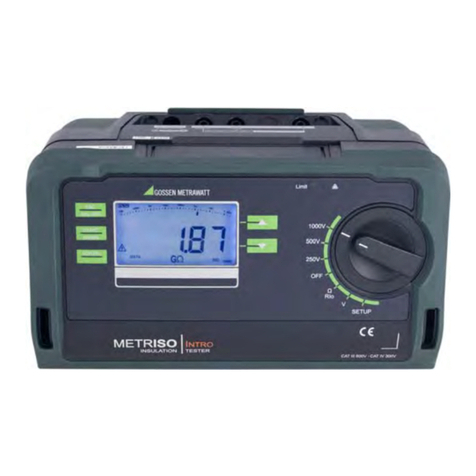
Gossen MetraWatt
Gossen MetraWatt METRISO INTRO operating instructions

SNDWAY
SNDWAY SW-6510S user manual
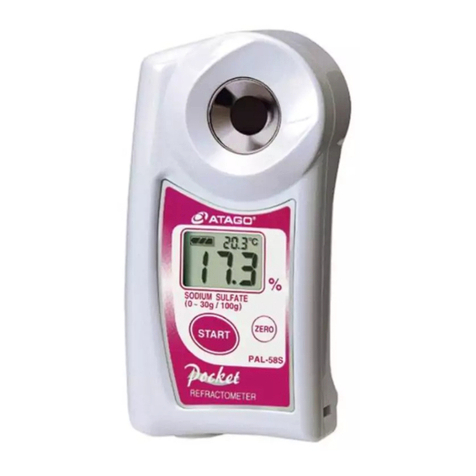
ATAGO
ATAGO PAL-58S instruction manual
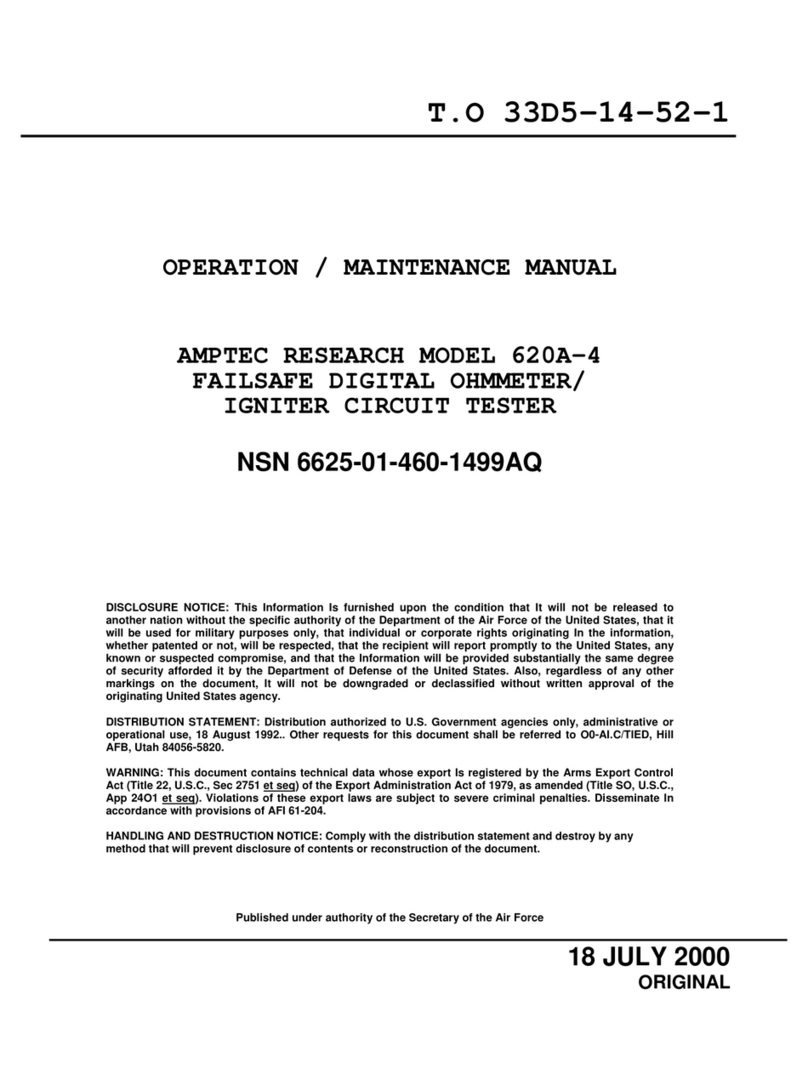
Amptec Research
Amptec Research 620A SERIES Operation and maintenance manual
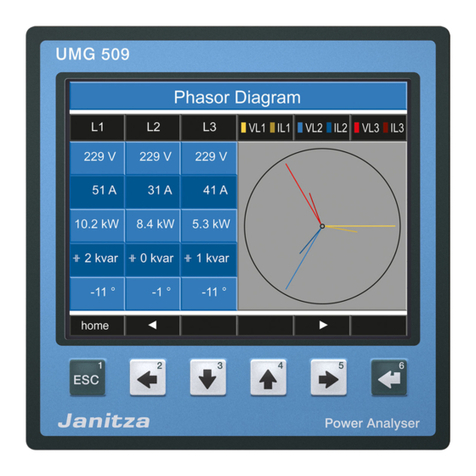
janitza
janitza UMG 509 Operation manual and technical data
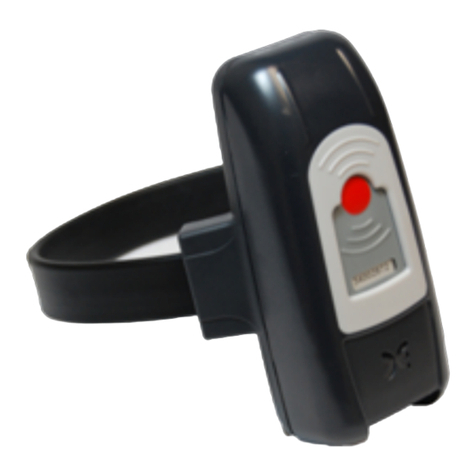
Reliant
Reliant 1Track Activation Instructions

Unihedron
Unihedron SQM-LU Operator's manual

Kanomax
Kanomax Anemomaster 6162 Operation manual
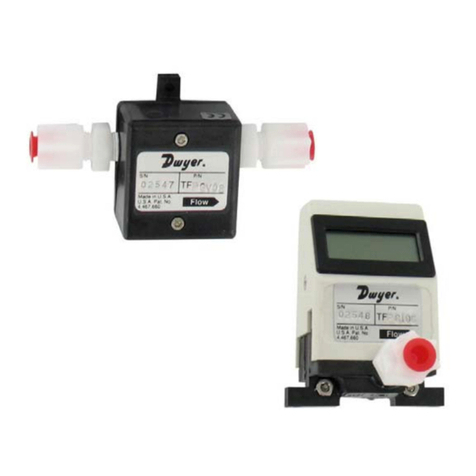
Dwyer Instruments
Dwyer Instruments TFP-GI Series Installation manual operating instructions
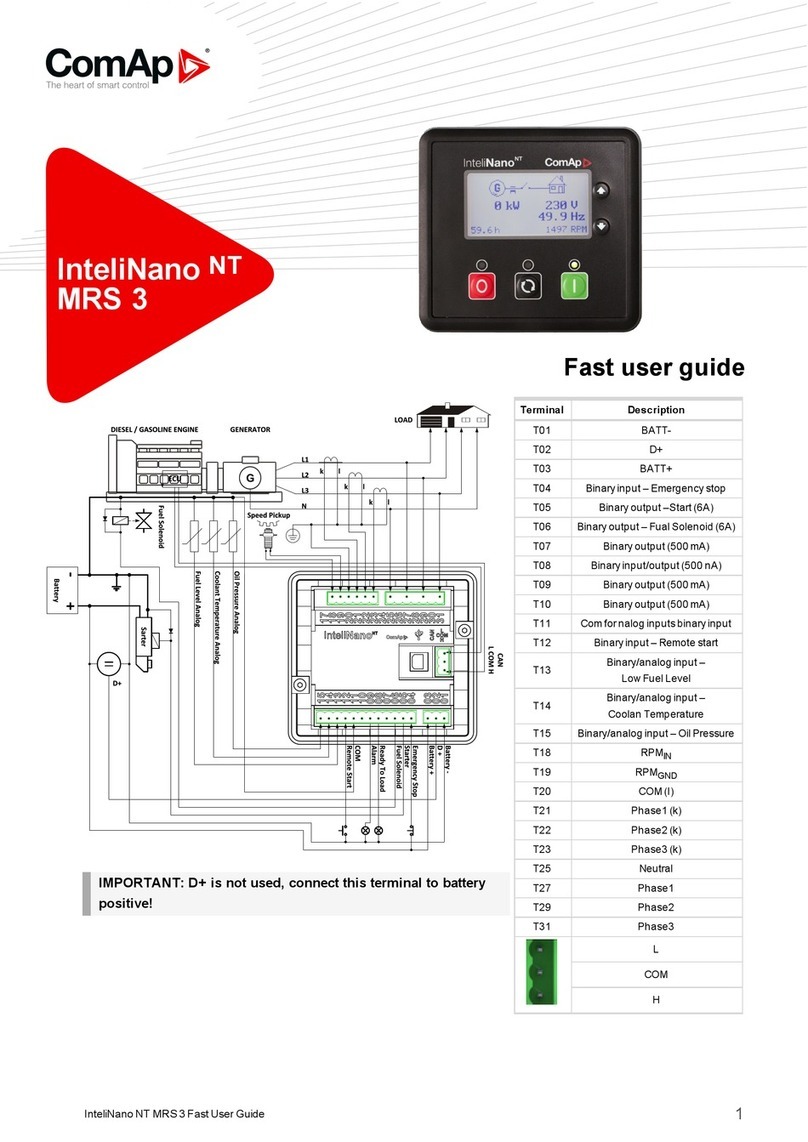
ComAp
ComAp InteliNano MRS 3 Fast user's guide
